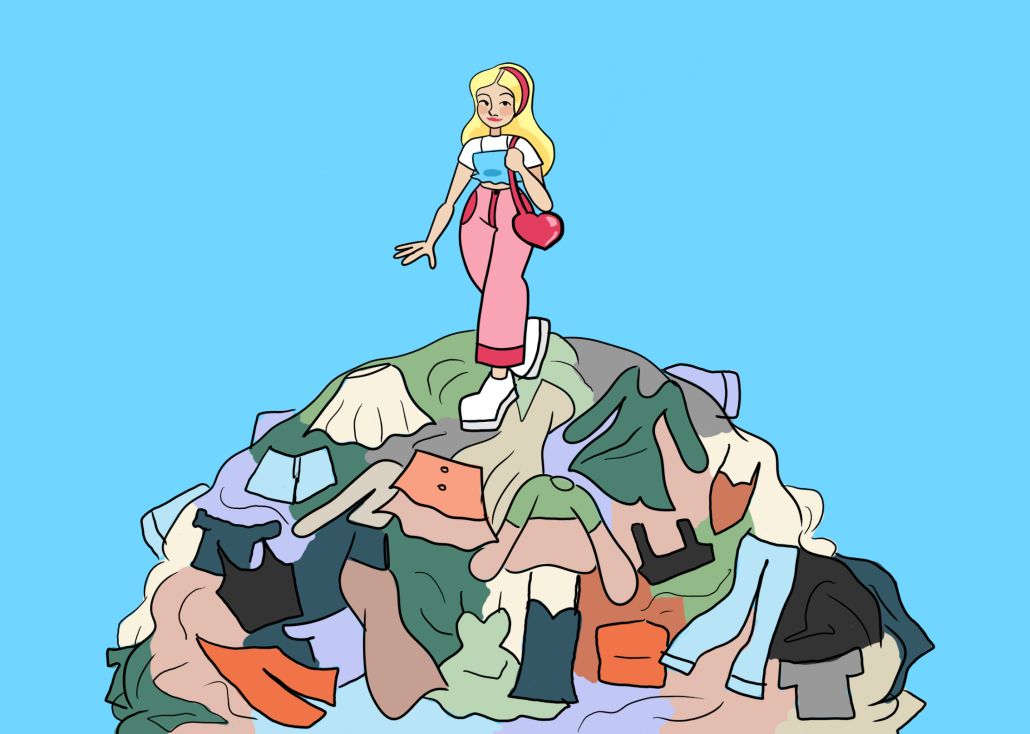Triple Bottom Line: Should we shift to thrifting?
I have the utmost admiration for those who can find a pair of perfectly distressed Levi’s from a thrift store or repurpose an ugly old T-shirt into something wearable. I’ve always wanted my style to be as cool and creative as the Depop girlies — as the kids say these days — but, sadly, my fashion IQ is equivalent to the amount of sleep I’ve been getting this semester — zero.
The secondhand apparel industry is rapidly rising and estimated to be worth about $64 billion in 2024. Independent consignment resale — through both stores and Depop shops — is also expected to increase significantly. As people become more environmentally and socially conscious, secondhand buying could cause the slow and steady decline of the fast fashion industry.
From the fancy upcycled thrift stores on Melrose to YouTube thrifting hauls, the digital world popularized the practice of shopping for used statement pieces. As brick and mortar stores and malls ride the downward trend, social media has picked up the slack, inspiring countless users to get creative with their own vintage finds and obscure band T-shirts.
Of Depop’s 30 million users, approximately 90% are aged 26 and under. At first glance, the growing used clothing trend is an unequivocally sustainable choice.
However, the novelty of flipping through someone else’s closet has its downsides. Due to the increased demand in thrifting, prices and scarcity of basic items grew, which affects those who might not have the means to shop elsewhere.
Thrifting contains a cognitive dissonance that needs to be addressed. It’s fantastic that the stigma around thrifting has changed and that more people are interested in purchasing used clothing — it’s an opportunity to find uncommon, sustainable and durable pieces. However, as physical and virtual shops curate their inventory for the latest Gen-Z obsession, thrifting strays further away from its intended purpose — an affordable option for those in need — and more toward an exclusive, aesthetic experience such as the Melrose Trading Post.
I’m all for straying away from international corporate brands that churn out identical crop tops and mom jeans, but new thrifters are wearing the right clothes for the wrong reasons. Middle and upper classes’ gentrification of thrifting makes it inaccessible to those who have no alternatives. Translating excessive overconsumption from the new to the old, Depop resellers and thrift flippers are exponentially multiplying as they sift through donations at local thrift shops in the hopes of turning a profit.
Thrifting has been touted as the end of fast fashion, but the toxic combination of capitalistic competition and social media trends have created an insatiable demand for both new and used clothing . As we change the ways we consume apparel, thrift stores change, too. In fact, recent trends show that thrift stores are seeing an influx of donations of cheaply-made, trendy pieces.
All of these convoluted pros and cons make an already-unenthusiastic shopper, such as me, never want to purchase anything again. However, the nuances of thrifting and its alternatives beg the question: Is there ever such a thing as ethical consumption in our undeniably capitalistic society?
I’d argue that there’s not — conscientious consumption is quite literally exhausting. Sometimes, it’s just so much easier not to think at all. Ultimately, we all need to make a living and wear clothes on our backs. Although their money goes to good use, thrift stores still profit off whoever patronizes them.
Although still a step toward saving money, better consumption habits and snazzier style, thrifting over fast fashion is not always a simple, black and white solution. Regardless of where you shop, it’s worth taking the time to be a more thoughtful consumer. Analyze the frequency and cost of your own consumption habits, consider the durability of your favorite brands and pieces of clothing and inform yourself about your favorite stores’ manufacturing and labor processes. Most importantly, reevaluate your own actions.
In the fashion industry, the only way to reduce environmental impact is to simply buy less from less environmentally damaging sources. Continually buying cheap clothing — while convenient — perpetuates a cycle of overconsumption and strains our limited material resources and maxed-out environment. Although comparatively better, the same goes for thrifting: Maybe the carbon impact of your purchases is significantly less, but it’s still unnecessary to walk away from a thrift store laden with an entirely new wardrobe.
For environmental and social progress to be made, the overall attitude toward fashion in our society needs to change. We have to look beyond trends and understand thrifting’s importance, both as a sustainable choice and legitimate option for lower-income communities. Clothes themselves should be regarded as less disposable, and until our social media — and consequently, shopping — habits take a greener turn, it will be impossible to truly escape the hold of trendy, fleeting fast fashion.
Montana Denton is a senior writing about environmental issues, sustainability and society. Her column, “Triple Bottom Line,” runs every other Wednesday.


